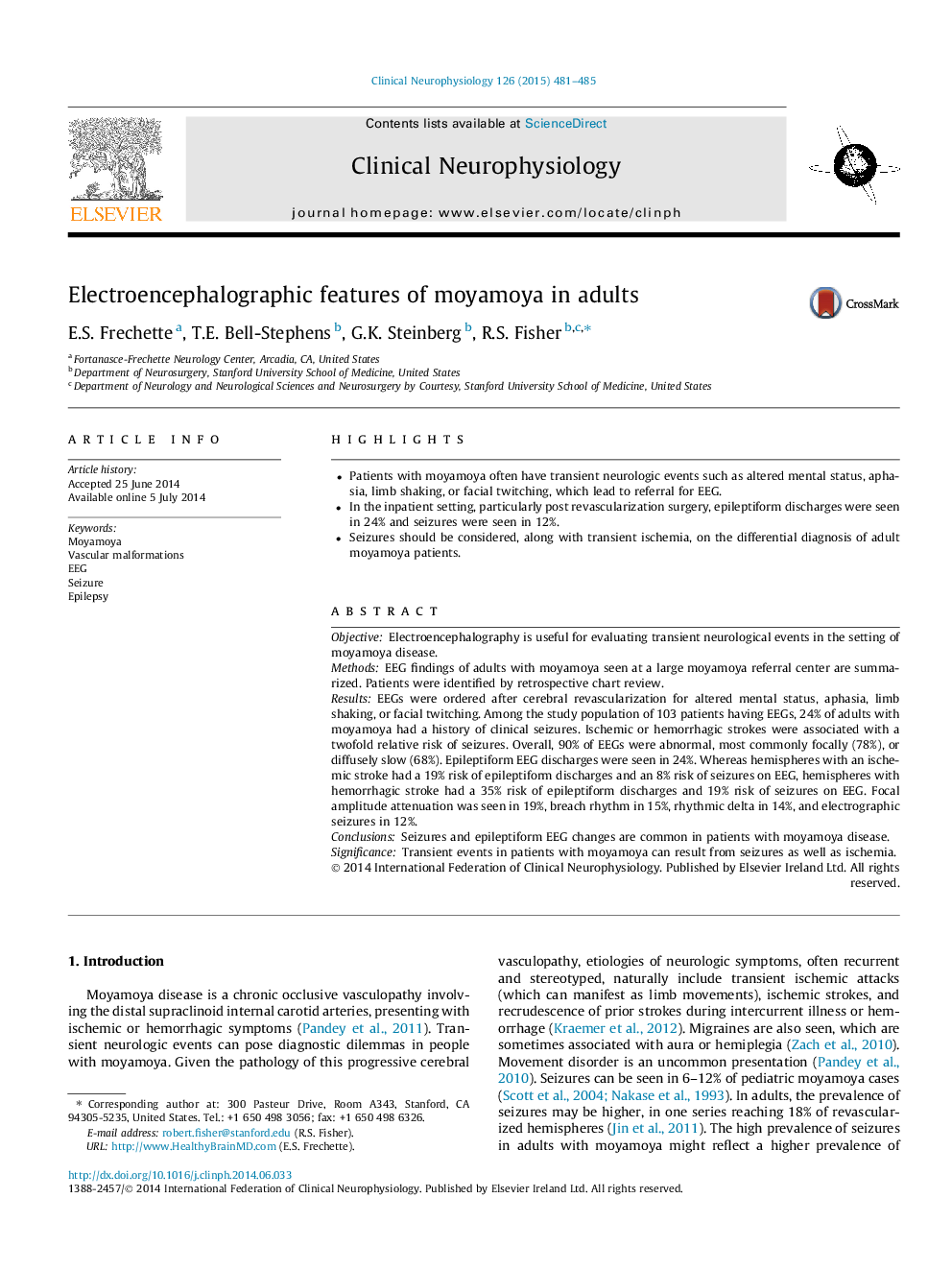| Article ID | Journal | Published Year | Pages | File Type |
|---|---|---|---|---|
| 3043707 | Clinical Neurophysiology | 2015 | 5 Pages |
•Patients with moyamoya often have transient neurologic events such as altered mental status, aphasia, limb shaking, or facial twitching, which lead to referral for EEG.•In the inpatient setting, particularly post revascularization surgery, epileptiform discharges were seen in 24% and seizures were seen in 12%.•Seizures should be considered, along with transient ischemia, on the differential diagnosis of adult moyamoya patients.
ObjectiveElectroencephalography is useful for evaluating transient neurological events in the setting of moyamoya disease.MethodsEEG findings of adults with moyamoya seen at a large moyamoya referral center are summarized. Patients were identified by retrospective chart review.ResultsEEGs were ordered after cerebral revascularization for altered mental status, aphasia, limb shaking, or facial twitching. Among the study population of 103 patients having EEGs, 24% of adults with moyamoya had a history of clinical seizures. Ischemic or hemorrhagic strokes were associated with a twofold relative risk of seizures. Overall, 90% of EEGs were abnormal, most commonly focally (78%), or diffusely slow (68%). Epileptiform EEG discharges were seen in 24%. Whereas hemispheres with an ischemic stroke had a 19% risk of epileptiform discharges and an 8% risk of seizures on EEG, hemispheres with hemorrhagic stroke had a 35% risk of epileptiform discharges and 19% risk of seizures on EEG. Focal amplitude attenuation was seen in 19%, breach rhythm in 15%, rhythmic delta in 14%, and electrographic seizures in 12%.ConclusionsSeizures and epileptiform EEG changes are common in patients with moyamoya disease.SignificanceTransient events in patients with moyamoya can result from seizures as well as ischemia.
